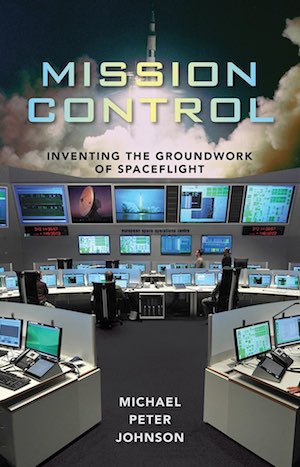Review: Mission Controlby Jeff Foust
|
| “Throughout this study, it became clear that the greatest differences in operation arose out of the missions monitored in the room more than anything else, including national ties,” Johnson writes. |
It’s tempting to say they were cheering in mission control, but at this phase of the mission, there was little for them to control. The one-way light travel time at Juno’s distance from the Earth was 48 minutes, meaning that Juno had actually completed the burn before telemetry indicating the burn had started arrived at JPL. Had something gone wrong, there was virtually nothing they could do: the spacecraft was programmed to deal with various contingencies, such as restarting the engine, without intervention from humans.
Those arrays of consoles, and the people using them, are what we expect from mission control, an aspect of spaceflight that dates back to the beginning of the Space Age, even if how they’re used differs based on the mission and the organization. In Mission Control, historian of technology Michel Peter Johnson compares and contrasts different such organizations with a particular focus on how they’re organized.
Johnson examines three mission control organization in his book: the one at NASA’s Johnson Space Center that monitors the agency’s human spaceflight efforts, the one at JPL for planetary science missions, and the European Space Agency’s European Space Operations Centre (ESOC) in Darmstadt, Germany, that handles ESA satellites and some others. For each, he provides a detailed history of their development, organization, and operations, down to the specific types of computers used in each facility.
There are, not surprisingly, similarities and differences among the three facilities. All have main control rooms and separate support rooms, staffed with experts with access to all the data they need to monitor and make decisions about missions. “Throughout this study, it became clear that the greatest differences in operation arose out of the missions monitored in the room more than anything else, including national ties,” he writes. That is, JPL and ESOC deal with robotic missions, including those far from Earth, while JSC deals with human spaceflight missions that have never ventured farther than the Moon (so far), and nothing beyond Earth orbit since 1972. That difference makes ESOC more like JPL than JSC. Yet, ESOC is more similar to JSC in other areas, including how the layout of its mission control has stayed relatively stable over the years, while JPL has made several changes to its control center.
Mission Control is wonderfully rich in detail in some areas, but unfortunately lacking in others. Johnson dives deep into the technologies used by the various centers, from the types of mainframes and workstations they used down to when ESOC installed electronic door locks across its various buildings (1980, if you’re curious.) There’s much less, though, about the people who used those buildings, computers, and electronic locks, and how they shaped the development of those facilities and the missions they controlled. The book mostly treats them as well-trained, proficient but anonymous experts charged with overseeing missions and spacecraft. Yet, as JSC’s mission control demonstrated, they were not the homogeneous group of people one might believe (see “Review: Go Flight!”, The Space Review, January 4, 2016).
| Mission Control is wonderfully rich in detail in some areas, but unfortunately lacking in others. |
The scope of the book, focusing only on NASA and ESA facilities, is also unfortunate. The book doesn’t examine how mission control centers in other nations are operated, and how they differ from those in the US and Europe. An examination of mission control operations in the Soviet Union and Russia alone would likely offer some interesting comparisons and contrasts. There’s also the growing number of satellite control facilities in the private sector that serve as mission control for fleets of satellites operated by companies like Intelsat, SES, and Iridium, who have to operate dozens of satellites simultaneously, with other companies planning constellations of hundreds of satellites in the near future. What lessons those companies have taken from space agencies, and what lessons they have to offer in return, would be fascinating, but is not explored here.
Johnson notes in the concluding chapter of Mission Control that there is a push for more automation to reduce the reliance on mission control, either for missions where people on the ground can’t perform real-time control of spacecraft—like Juno’s arrival at Jupiter—or to reduce costs. But, he acknowledges, it won’t be going away for the foreseeable future. “While space agencies are working toward less dependence on Mission Control, it remains a necessary aspect of all spaceflight,” he writes. And so these facilities will continue to evolve and expand to meet the ever-changing needs of the missions they support.
